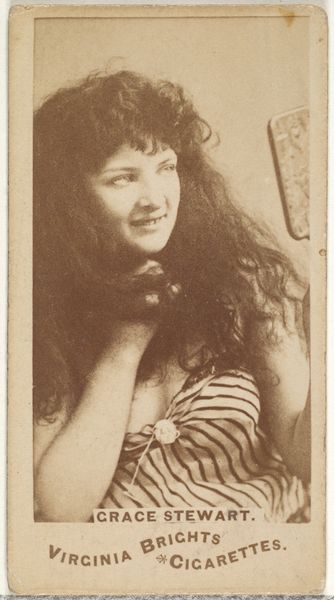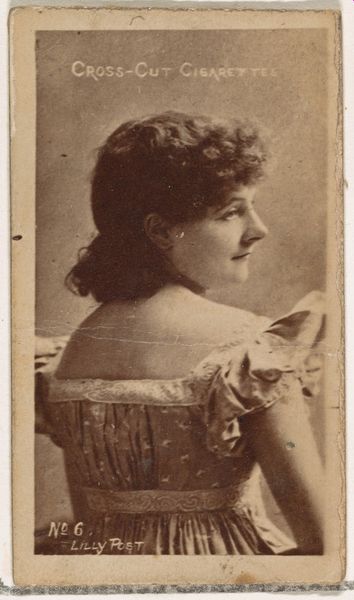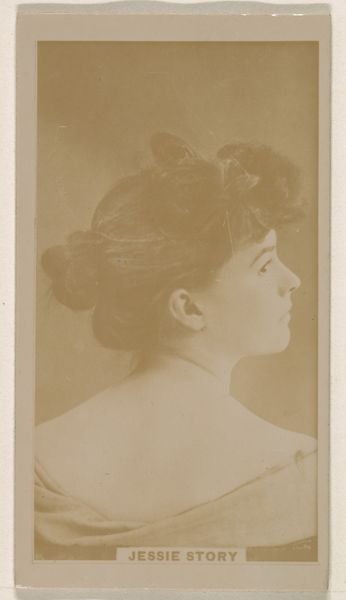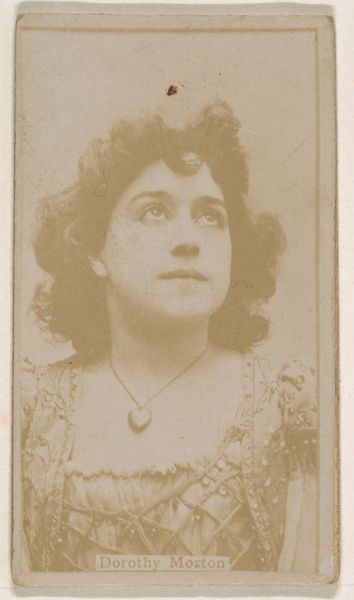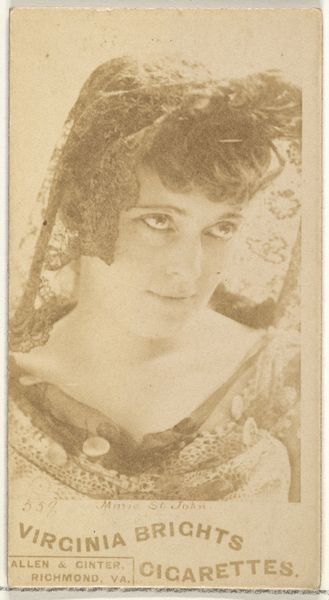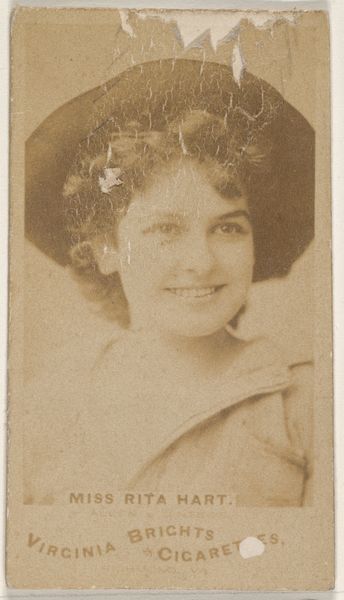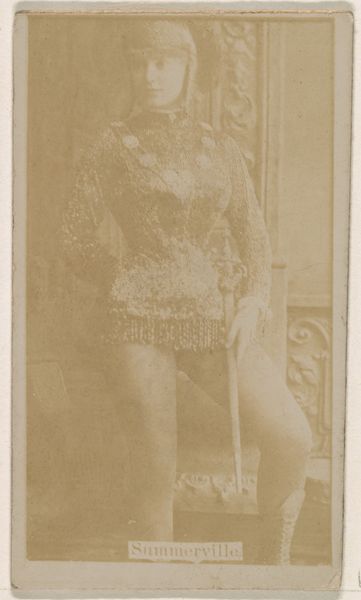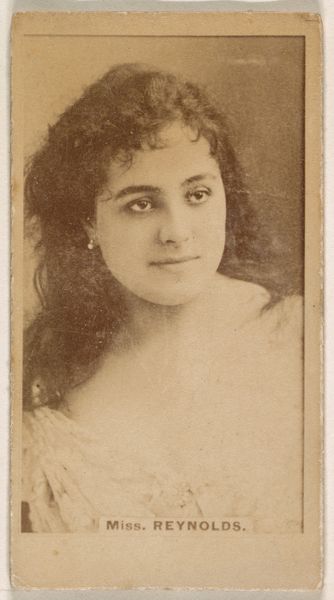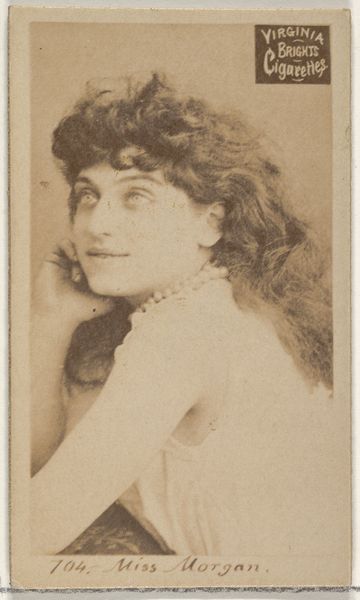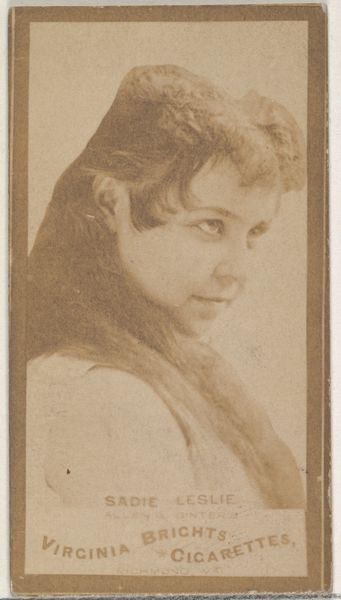
Dimensions: image: 9.5 × 7.3 cm (3 3/4 × 2 7/8 in.) sheet: 10.8 × 8.6 cm (4 1/4 × 3 3/8 in.)
Copyright: National Gallery of Art: CC0 1.0
Curator: Here we have Andy Warhol's polaroid from 1981, titled "Andrea Feldman (Long Straight Dark Blonde Hair)." Immediately, the pastel palette strikes me as quite haunting. Editor: I see the coolness, the detached gaze, but there’s also something intensely personal. Considering Feldman’s tragic history and the context of Warhol’s Factory, her expression becomes a potent signifier. Curator: Signifier is an interesting term, what is this artwork signifying to you, from a social and historical point of view? Editor: Well, in semiotic terms, Warhol captures the commodification of fame and the vulnerability of those orbiting the art world's ephemeral core. The snapshot aesthetic, seemingly casual, is carefully constructed, and Andrea's look confronts us directly with both raw emotion and posed persona. Considering Andrea's status as a "superstar," this feels intentional, highlighting the celebrity construct itself. The photograph doesn't capture her essence; it adds another layer to her performance. Curator: The framing of that performance is also telling, wouldn’t you say? Her body turned away as her head looks directly toward the viewer? Editor: Absolutely. That gaze—defiant yet vulnerable—commands our attention. The polaroid format itself speaks to instant gratification and disposable celebrity culture. The aesthetic choices point us to key elements like beauty, vulnerability and the inherent disposability of fame in Warhol’s world. Curator: The fact that we know Feldman's story colors our reading so strongly. One wonders how we'd interpret this work without that biographical context. The interplay between image and cultural narrative is essential to understanding the work's enduring power, almost eclipsing any consideration of pure aesthetics. Editor: Perhaps, but to me, the brilliance of Warhol’s portraits resides in how those surface elements carry such weight, functioning both as attractive aesthetic features and social commentary. Whether examining form or historical narrative, we come to the same somber place. Curator: I agree, it's that intersection that makes it so compelling and perhaps, perpetually unsettling. Editor: Exactly, unsettling in its construction and timeless in its implications, reminding us that what we see and what it shows, tells stories that exceed any technical consideration of the art itself.
Comments
No comments
Be the first to comment and join the conversation on the ultimate creative platform.
